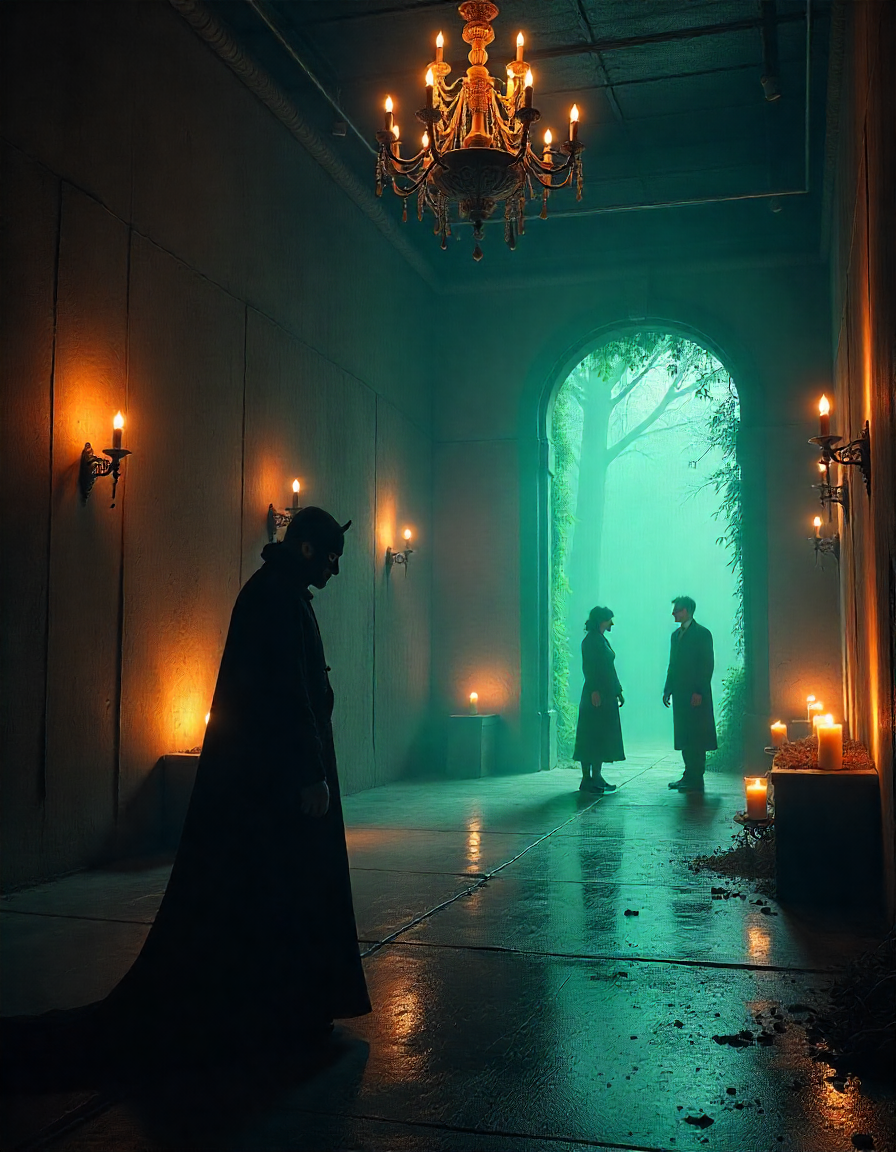The world of entertainment has always been a kaleidoscope of innovation, shifting with the tides of technology, culture, and audience expectations. In recent years, one form of performance has carved out a bold new space: immersive theater. Far from the traditional stage-and-audience setup, immersive theater invites spectators to step into the story, blurring the lines between performer and participant. It’s a phenomenon that’s reshaping how we experience narrative, community, and even ourselves. This article dives into the roots, evolution, and cultural impact of immersive theater, exploring why it’s captivating audiences worldwide and what it means for the future of entertainment.
A New Kind of Stage
Immersive theater isn’t just about watching a story unfold—it’s about living it. Picture this: you’re wandering through a dimly lit warehouse, the air thick with the scent of old books and candle wax. Actors move around you, whispering secrets, inviting you to follow them down a hidden corridor. You’re not just a spectator; you’re part of the world they’ve created. This is the essence of immersive theater, where the boundaries of performance dissolve, and the audience becomes a co-creator of the experience.
The roots of this art form stretch back further than you might think. While it’s tempting to call immersive theater a modern invention, its DNA can be traced to experimental performance movements of the 20th century. Think of the avant-garde happenings of the 1960s, where artists like Allan Kaprow staged events that broke down the wall between art and life. Or consider the interactive street performances of commedia dell’arte in Renaissance Italy, where actors engaged directly with passersby. What’s new today is the scale, ambition, and technological integration that modern immersive theater brings to the table.
One of the pioneers of the current wave is Punchdrunk, a British theater company founded in 2000. Their production Sleep No More, a reimagining of Shakespeare’s Macbeth, has become a cultural touchstone. Set in the fictional McKittrick Hotel—a sprawling, multi-story venue—audience members wear masks and roam freely through meticulously designed sets, following characters or stumbling upon private moments. There’s no fixed path, no single narrative. Your experience depends on where you go, who you follow, and what you choose to explore. This freedom is what makes immersive theater so intoxicating—it’s a choose-your-own-adventure story brought to life.
Why It Works
So, why are people flocking to these experiences? In an age dominated by screens, immersive theater offers something rare: presence. In a world where we’re constantly distracted by notifications and algorithms, stepping into a fully realized, tactile environment feels like a rebellion. You can’t check your phone during Sleep No More—not just because it’s discouraged, but because the world around you demands your full attention. The textures of the set, the whispers of the performers, the unexpected moments of connection pull you into the moment in a way that a Netflix binge never could.
There’s also a psychological allure. Immersive theater taps into our desire for agency. Unlike traditional plays, where you’re a passive observer, these experiences let you shape your own journey. You might uncover a hidden subplot or share an intimate moment with a character who hands you a letter or locks eyes with you. This sense of control—and the thrill of discovery—creates a deeply personal connection to the story. It’s no surprise that fans often return multiple times, chasing new perspectives or missed details.
The communal aspect is equally powerful. Even as you explore solo, you’re sharing the space with others, creating a strange, unspoken bond. In productions like Then She Fell, a reimagining of Alice in Wonderland, only 15 audience members are admitted per show. The intimacy fosters a sense of camaraderie, as if you’ve all stumbled into a secret world together. It’s a stark contrast to the isolation of scrolling through social media or watching a blockbuster in a packed cinema.
The Role of Technology
While immersive theater thrives on human connection, technology has amplified its potential. Advanced sound design, augmented reality, and interactive lighting can transform a space into something otherworldly. Take The Drowned Man, another Punchdrunk production, which used synchronized audio and visual effects to create a cinematic atmosphere across multiple floors. Some newer productions even incorporate virtual reality headsets or smartphone apps to deepen the experience, letting audiences unlock hidden content or interact with the story in real-time.
But there’s a delicate balance here. Too much tech can overwhelm the human element that makes immersive theater special. The best productions use technology as a tool, not a crutch, ensuring that the focus remains on the emotional and sensory experience. For example, The Nest, a 2023 production in London, used subtle projections to create shifting environments—a forest one moment, a starry sky the next—without overshadowing the actors’ performances or the audience’s role in the narrative.
A Global Movement
Immersive theater isn’t just a Western phenomenon; it’s taking root worldwide, adapting to local cultures and histories. In Tokyo, companies like Tokyo Immersive have created experiences that blend traditional Japanese storytelling with modern technology, inviting audiences to explore haunted temples or futuristic cityscapes. In Mexico City, Teatro en el Barrio transforms historic neighborhoods into living stages, where audiences follow actors through markets and alleyways, uncovering stories of love, loss, and revolution.
These global variations highlight another strength of immersive theater: its ability to reflect the unique spirit of a place. In New York, productions often lean into gritty urban aesthetics, while in Paris, they might embrace romantic, historical grandeur. Wherever it’s staged, immersive theater becomes a mirror for the community it serves, inviting audiences to see their world through a new lens.
Challenges and Criticisms
Of course, immersive theater isn’t without its hurdles. For one, it’s expensive to produce. Creating sprawling, detailed sets and paying a large cast for intimate performances doesn’t come cheap. Ticket prices can be steep—Sleep No More tickets often exceed $100—making it inaccessible for some. There’s also the question of scalability. Unlike a traditional play that can pack hundreds into a theater, many immersive shows limit audience size to preserve the experience, which can make them feel exclusive or elitist.
Then there’s the issue of comfort. Not everyone loves the idea of wandering through a dark, unfamiliar space or being singled out by a performer. For some, the lack of structure can feel disorienting rather than freeing. Producers have to walk a fine line, ensuring audiences feel safe and included without sacrificing the unpredictability that defines the genre.
Critics also point out that immersive theater can sometimes prioritize spectacle over substance. A dazzling set or a clever gimmick doesn’t always translate to a meaningful story. The best productions strike a balance, using the immersive format to deepen the narrative rather than distract from it.
The Future of Entertainment
So, where is immersive theater headed? As audiences crave more authentic, participatory experiences, the genre is likely to grow, evolving alongside technology and cultural shifts. We’re already seeing hybrid forms emerge—productions that blend theater with escape rooms, role-playing games, or even virtual reality worlds. Imagine a future where you could step into a fully immersive Star Wars universe, wielding a lightsaber alongside other audience members, or explore a historical drama where your choices shape the outcome.
There’s also potential for immersive theater to tackle big ideas. Climate change, social justice, and identity are already being explored in productions like The Great Comet, which reimagines a slice of Tolstoy’s War and Peace as an interactive cabaret. By placing audiences inside these stories, immersive theater can spark empathy and dialogue in ways that traditional media often can’t.
At its core, immersive theater is about connection—to the story, to the performers, to each other. In a world that often feels fragmented, it offers a space to come together, to feel something real, to be part of something bigger. Whether you’re chasing a mysterious figure through a candlelit maze or sharing a quiet moment with a character who seems to see you, immersive theater reminds us of the power of stories to bring us closer. As it continues to evolve, one thing is clear: this isn’t just entertainment—it’s a movement, and it’s only just beginning.





